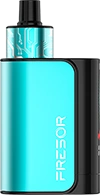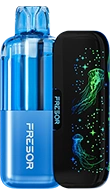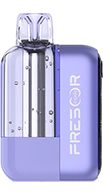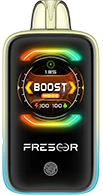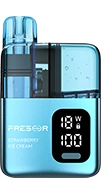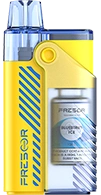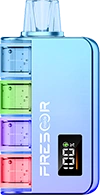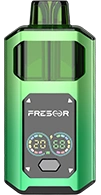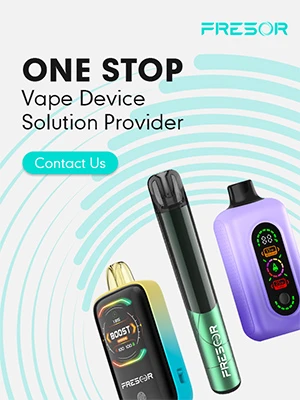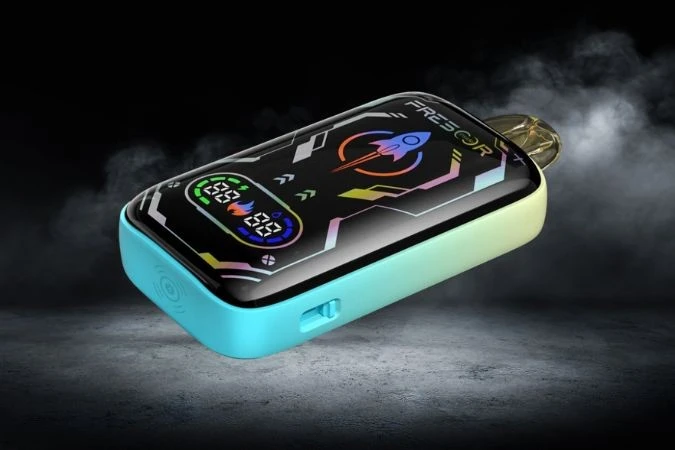What is an Atomizer on a Vape? A Beginner's Guide to Vape Components

11 July 2024
Vaping has become a popular trend, but what exactly is it? Unlike traditional cigarettes, vapes use electronic devices to create an inhalable aerosol, often containing nicotine and flavorings. Therefore, knowing your vape's parts is like understanding the engine in your car.
Generally, vape atomizers come in various types, each with its function. Rebuildable tank atomizers (RTAs) offer the most customization, while pre-built coils in vape pen atomizers or disposable vapes are more accessible for beginners. If you want to know more about vape atomizers and their components, FRESOR has you covered.
We have compiled everything you need to know about vape atomizers and their effectiveness in enhancing a fantastic vaping experience.
Let’s dive in;
What Is an Atomizer on a Vape?
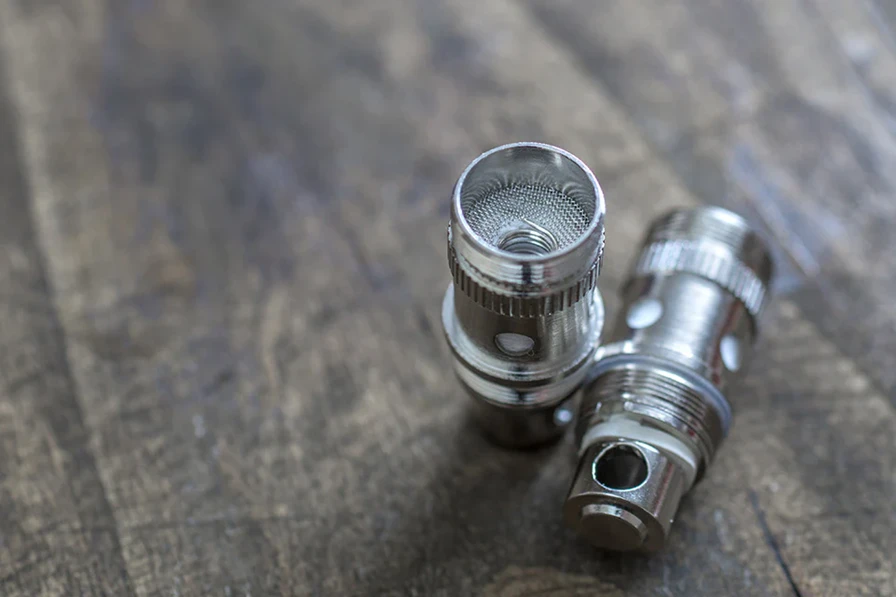
It is the part responsible for converting the e-liquid into vapor.
An atomizer heats the liquid until it reaches a temperature that allows it to turn into vapor, which the user inhales. This process involves several key elements, including the vape coil, wicking material, and heating element.
Components of an Atomizer
Coils: The coils heat up the e-liquid. They can be made from various materials, including stainless steel and nickel. Low-resistance coils produce more vapor, while higher-resistance coils are better for flavor.
Wicking Material: Typically cotton, the wick draws e-liquid to the coil. The quality of the wicking material impacts the flavor and vapor production.
Heating Element: The coil serves as the heating element in most atomizers. Mesh coils are becoming popular due to their larger surface area and even heating.
Tank: The tank holds the e-liquid. Some atomizers have transparent tanks to monitor liquid levels easily.
How Does an Atomizer Work?
An atomizer on a vape is the fundamental component that transforms e-liquid into vapor, facilitating the entire vaping experience. This component works in the following ways;
The vape coil, typically made from materials like stainless steel, is at the core of every atomizer. When activated by pressing a button on a vape mod or inhaling through a vape pen, the battery sends an electrical current through the coil. This current generates heat, which is essential for vaporizing the e-liquid.
Additionally, surrounding the coil is a wicking material, often cotton, which absorbs and delivers the e-liquid to the heated coil. The wick plays a crucial role in maintaining a consistent flow of e-liquid to the coil, ensuring efficient vaporization and flavor delivery.
As the coil heats up, it reaches temperatures that vaporize the e-liquid absorbed in the wick. Thanks to the controlled heating provided by the coil, this vaporization process occurs without burning the liquid. The resulting vapor is inhaled by the user through the drip tip atomizer, providing the desired flavor and throat hit.
Types of Atomizers: Overview of Different Types and Their Pros and Cons
The vaping world offers various vape atomizers, each catering to different preferences and experience levels. Understanding these options is essential for finding the perfect fit for your vaping journey.
Here's a breakdown of the most common atomizer types:
1. Disposable Vape atomizers
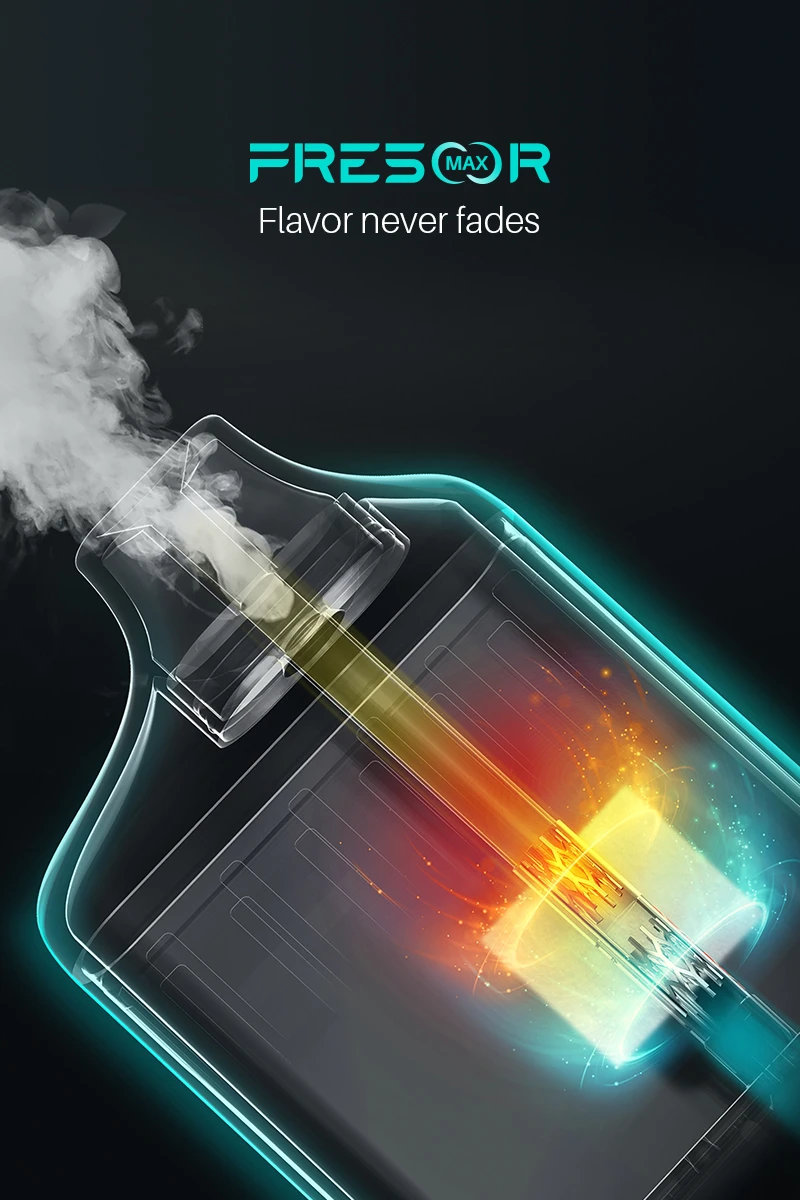
These pre-filled cartridges are the epitome of convenience. They come with a pre-installed vape coil and a tank filled with e-liquid. Once depleted, discard and replace.
Perfect for beginners or those who prefer a fuss-free experience, disposables offer limited customization and can be more expensive in the long run.
Pros
· Ready to use out of the box, with no need for refilling or coil maintenance.
· Compact and easy to carry, ideal for traveling.
· Users do not need to worry about coil changes or cleaning.
Cons
· It can be more expensive in the long run compared to refillable atomizers.
2. Coil Change Atomizers (Clearomizers & Sub-Ohm Tanks)

These vape atomizers offer a middle ground between disposables and rebuildable. They feature replaceable vape coils, allowing you to swap out flavors or adjust performance without completely replacing the entire atomizer.
Clearomizers typically have a smaller capacity and lower power output, making them ideal for vape pens. Sub-ohm tanks, on the other hand, cater to vapers seeking more vapor production and bolder flavors.
Pros
Offers a range of coil options to customize the vaping experience.
Replacement coils are generally cheaper than purchasing new disposable atomizers.
Simple to maintain compared to rebuildable options.
Cons
Coil lifespan varies and requires periodic replacement.
3. Rebuildable Vape Devices

Source: vape.co.za
This category delves into the world of customization and enthusiast-level vaping. Rebuildables require you to build your own coils and wicks, offering ultimate control over the vaping experience. While requiring more knowledge and practice, rebuildables can be significantly cheaper in the long run and deliver the most intense flavor and vapor production.
Here are the sub-categories of rebuildable vape devices;
Rebuildable Tank Atomizer (RTA): The RTA combines the rebuildable experience with a built-in tank. You build your coils and wicks but enjoy the convenience of a pre-filled reservoir. This offers a balance between customization and ease of use.
Rebuildable Drip Atomizer (RDA): The RDA eliminates the tank. You drip e-liquid directly onto the wick for a more intense and immediate flavor experience. RDAs require frequent dripping but offer unparalleled control and customization.
Rebuildable Tank Dripping Atomizer (RDA): This hybrid combines elements of both RTA and RDA. It features a tank for holding e-liquid but allows dripping for those who desire a more intense hit.
Pros
Complete control over coil builds and wicking materials for personalized vaping.
Generally, provides superior flavor and vapor compared to non-rebuildable atomizers.
Long-term cost savings as users can replace coils and wick rather than purchasing new atomizers.
Cons
Requires knowledge of coil building and wicking techniques.
How to Choose the Right Atomizer for Your Needs
Choosing a suitable atomizer is crucial for optimizing your vaping experience. Several factors should be considered:
· Vaping Style
Your vaping style dictates the type of atomizer that best suits you. For direct lung inhales, rebuildable atomizers like RDAs or RTAs with lower resistance coils and higher power output are ideal. For mouth-to-lung inhales, consider atomizers with higher-resistance coils.
· Experience Level
Beginners may prefer simpler atomizers like disposable or coil-change-in vape pens or pod systems. Intermediate to advanced vapers might enjoy the customization options offered by rebuildable atomizers (RTAs or RDAs), which allow for coil building and wick customization.
· Coil Resistance
The coil resistance affects the vaping experience. Lower resistance coils (sub-ohm coils) produce more vapor and intense flavor but require higher power outputs. Higher resistance coils provide a smoother throat hit and are suitable for lower power devices.
· Power Output of Your Mod
Ensure compatibility between your atomizer and mod. High-performance mods can accommodate various atomizers, from RTAs for cloud chasing to RDAs for flavor enthusiasts. Adjust the power output to match the coil resistance for optimal performance.
Factors Influencing Atomizer Choice
· Vape Juice (E-Liquid): Different atomizers are suited for different VG/PG ratios and flavors. RTAs and RDAs allow for the experimentation of various e-liquids.
· Wicking Material: Based on wicking efficiency and flavor purity, choose between organic cotton, mesh, or other materials.
· Maintenance: Consider ease of cleaning and coil/wick replacement, especially with rebuildable atomizers that require periodic maintenance.
Components of a Vape Device and Their Relationships
A vape device consists of several essential components that facilitate the vaping experience. Understanding how these components interact is critical to maximizing performance and satisfaction.
· Atomizer
The atomizer is the core component responsible for vaporizing e-liquids. It includes the vape coil, which heats up to vaporize the e-liquid, and the wicking material, which absorbs and delivers e-liquid to the coil.
· Battery
The battery powers the vape device and supplies the necessary current to heat the coil in the atomizer. It comes in various types (e.g., internal, removable) and capacities, influencing factors like device size and battery life.
· Tank
The tank holds the e-liquid and is connected to the atomizer. It varies in capacity and design, affecting how much e-liquid can be stored and vaped before refilling is required. Tanks are integral to rebuildable tank atomizers (RTAs) and cartomizers.
· Mod (Vape Mod)
The mod houses the battery and provides the circuitry to regulate power output to the atomizer. It can be a simple tube mod or a sophisticated box mod with adjustable settings for wattage, voltage, and temperature control.
Relationship Between Atomizer and Other Parts
· Battery: Powers the atomizer's heating coil, influencing vapor production and flavor intensity.
· Tank: Supplies e-liquid to the atomizer, ensuring the coil remains saturated for efficient vaporization.
· Mod: Controls the power output delivered to the atomizer, allowing users to customize their vaping experience based on coil resistance and personal preferences.
How to Properly Maintain Your Atomizer for Optimal Performance
Proper maintenance of your vape atomizer is essential to ensure consistent performance, flavor quality, and longevity of your vaping device.
Here’s how to maintain it effectively:
· Regularly Clean Your Tank
Keeping your tank clean prevents residue buildup and maintains flavor purity. Use warm water to rinse the tank thoroughly, ensuring all e-liquid residue is removed. A mild dish soap solution can be used to remove stubborn residue. Avoid using harsh chemicals that may affect the taste of your vape juice.
· Replace Your Coils Regularly
Coils are the heating elements within your atomizer and need regular replacement to maintain optimal performance. Over time, coils accumulate residue and lose efficiency. Replace coils when you notice a burnt taste or reduced vapor production. Choose coils compatible with your atomizer and vaping style for the best experience.
· Keep Your Atomizer Connector Clean
The atomizer connector (the 510 connector) connects your atomizer to the mod and can accumulate dust, e-liquid, or dirt over time. Use a cotton swab lightly dampened with isopropyl alcohol to clean the connector and ensure a stable connection between your atomizer and mod.
Signs That Your Rebuildable tank Atomizers Needs to Be Replaced
Knowing when to replace your atomizer is essential for maintaining a satisfying vaping experience. Here are common signs that indicate it's time for a new atomizer:
· Burnt Taste
A burnt or unpleasant taste when vaping indicates that your atomizer needs replacing. This often occurs when the coil inside the atomizer has become worn out or covered in residue, affecting flavor quality.
· Weak Flavor
If you notice a significant decrease in flavor intensity despite using your favorite e-liquid, it may be due to a worn-out coil or wicking material. Proper flavor delivery depends on a clean and efficient atomizer.
· Less Vapor Production
Decreased vapor production compared to what you're accustomed to could mean the coil is not heating correctly or the wick is not adequately absorbing e-liquid. This can affect both cloud size and overall satisfaction with your vaping sessions.
· Leaking
Leaking from the tank or base of the atomizer indicates a potential issue with seals or O-rings. Continued leaking can lead to e-liquid wastage and potentially damage your device. It's advisable to replace the atomizer to prevent further complications.
Frequently Asked Questions (FAQs) About Atomizers
· What is the lifespan of a drip tip atomizer?
The lifespan of an atomizer varies depending on usage, maintenance, and type. Disposable atomizers typically last a few weeks to months before needing replacement due to coil degradation or wick inefficiency.
With proper care, rebuildable atomizers (RTAs and RDAs) can last longer, as coils and wicks can be replaced as needed.
Can you clean and reuse vape atomizers?
Yes, atomizers can be cleaned and reused, especially those in rebuildable atomizers. Cleaning involves disassembling the atomizer, soaking components in isopropyl alcohol to dissolve residue, and then rinsing thoroughly with water.
However, disposable atomizers are typically not designed for reuse and should be replaced when performance declines.
How do you know if a vape atomizer is compatible with your vape device?
To ensure compatibility, consider the following:
· Thread Type: Check if the atomizer has a 510 connection (most common) or another type that matches your mod.
· Power Range: Verify that the atomizer's recommended wattage or resistance range aligns with your mod's capabilities to avoid damage.
· Size and Design: Ensure the atomizer fits securely on your mod without overhang or connection issues.
· Vaping Style: Choose an atomizer (e.g., mouth-to-lung or direct lung) that suits your preferred vaping experience and mod capabilities.
Conclusion
Understanding the atomizer is fundamental to mastering your vape device. From coil types and wicking materials to choosing between rebuildable or disposable options, the atomizer plays a pivotal role in your vaping experience.
Whether you prefer the simplicity of vape pens or the customization of mods with rebuildable tank atomizers, knowing how atomizers work ensures optimal flavor, vapor production, and device longevity.

